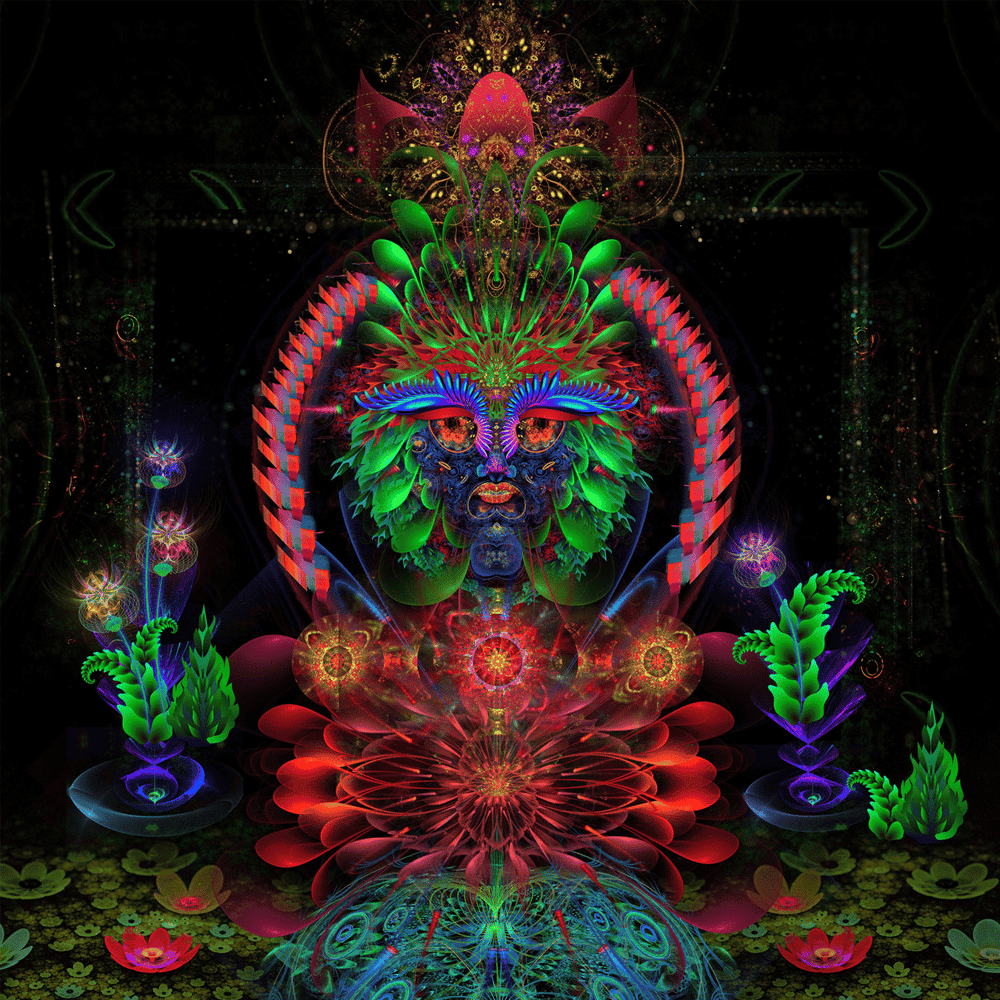#InConversation with Prerit Jain
By Davangi Pathak | Mar 5 2024 · 20 mins
Ranging from the exploration of objects to symbols steeped in Indian childhood and consumer culture, Prerit Jain’s artistic journey delves into profound contemplations on spirituality, his interests are manifold. The concepts of playfulness, collaborative creation, and spontaneity have consistently enraptured his creative vision. Through this interaction we will dig deep into Prerit’s journey and how he employs digital audio-video tools and augmented reality (AR) technology, Prerit crafts virtual devices and forms that provoke introspection. His preferred canvas resides within the digital landscape of Instagram, where he adeptly utilizes features such as stories and AR filters. Through these platforms, he extends an open invitation to individuals, urging them to actively engage, play, and interpret his creations through their own unique perspectives.
Davangi: You acquired a degree in Dental sciences, followed by two years of dentistry practice. What made you change the field and pursue artistic practice ?
Prerit: There were no intentions of delving into art and design initially. At that time, the concept of art and design as a discipline was entirely unfamiliar to me. It was during my tenure in dentistry that I gained access to the internet and began exploring social media platforms. I found myself captivated by music, films, and photography, and became acquainted with individuals engaged in fascinating endeavors. Gradually, I began sharing my drawing and photo manipulation work on platforms like Facebook and DeviantArt, albeit without much deliberation. It was during this period that I stumbled upon NID, an institution for which I met the eligibility criteria. Without harboring high expectations, I decided to apply. While I had been prepared to establish a clinic, I unexpectedly secured admission, leading me to pursue a Master's in Design instead of pursuing MDS.
Davangi: Your work inquires about the influence of domesticated technologies inside a digital matrix . What does this mean and how does it relate to your interests?
Prerit: Since my initiation into social media, experimenting with scripts on platforms like Orkut and customizing cover photos or profile pictures has become a playground of sorts for me. I've found enjoyment in manipulating its UI elements or incorporating ASCII art to create glitch-like illusions. In recent times, the digital realm has evolved into an immersive landscape, seemingly inseparable from reality, akin to an intangible matrix. With the proliferation of diverse applications, IoT devices, and smart gadgets, this space has become an extension of our everyday physical environment. Similar to uncovering cheat codes in video games, tinkering with these digital entities—whether by bending their rules, altering existing UI elements, or engaging in unintended interactions—often yields a sense of absurdity or disrupts the flow of these digital spaces and algorithms. As they increasingly transcend our control, they subtly influence our behavior in ways we may not fully comprehend.
Davangi: Manipulation of objects is a key element in your practice and creates a sort of hybrid of dental science & art. Did your practice in dentistry help you to understand objects and tinkering with manipulation? Please tell us in detail how you use dental materials for your creations?
Prerit: Certainly, engaging with objects and materials through hands-on exploration serves as an instinctive method for understanding their properties, while simultaneously nurturing imaginative thinking. I leverage both physical and digital mediums in my creative pursuits. I firmly believe that materials possess an inherent capacity to impart knowledge and assume distinct forms through manipulation and tactile interaction. During my dentistry studies, for instance, we delved into the intricacies of various dental materials: from their hardness and compressive strength to their elastic strain and shrinkage, and their practical applications in clinical settings. For instance, a profound understanding of alginate, an agar-based material, enables precise replication of intricate and soft surfaces. Additionally, we engaged in exercises involving sculpting dental anatomy from soft wax using precise tools, fostering creativity in a structured environment.
Dentistry, as a field, readily embraces emerging technologies and advanced biomedical devices, from local anesthesia and digital radiography to novel materials and computer-aided design. In the digital realm, objects manifest as images, graphics, text, and user interface elements, while software serves as our toolkit. Hence, creation unfolds through two approaches: one involving ideation followed by tool utilization—akin to the design process with physical materials—and the other, a more exploratory journey where experimentation with tools leads to the realization of a satisfying creation. Often, the creative process encompasses a blend of both methodologies.
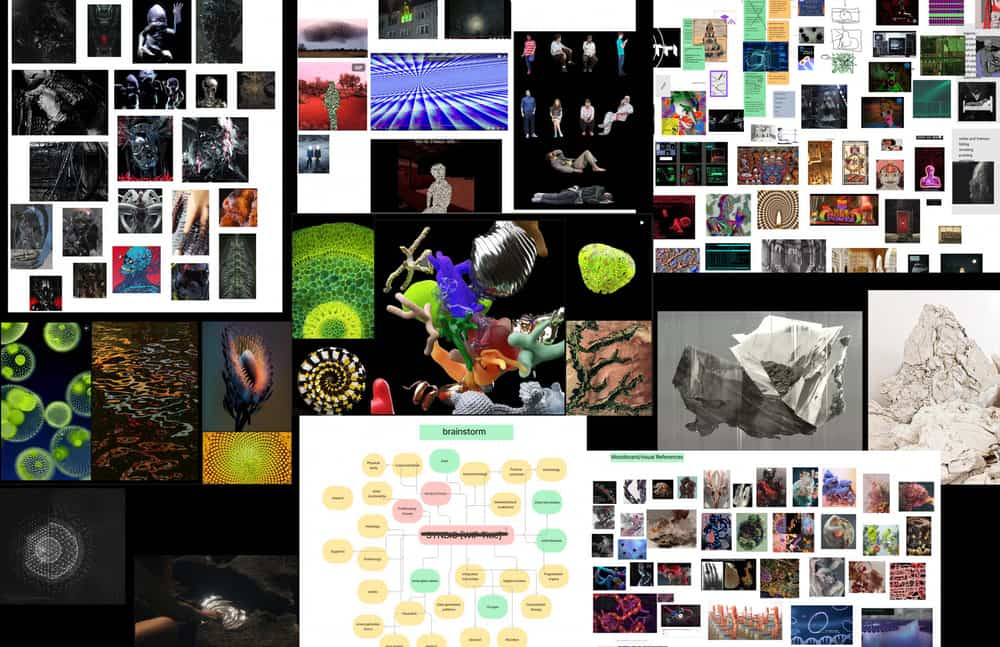

Design mood board
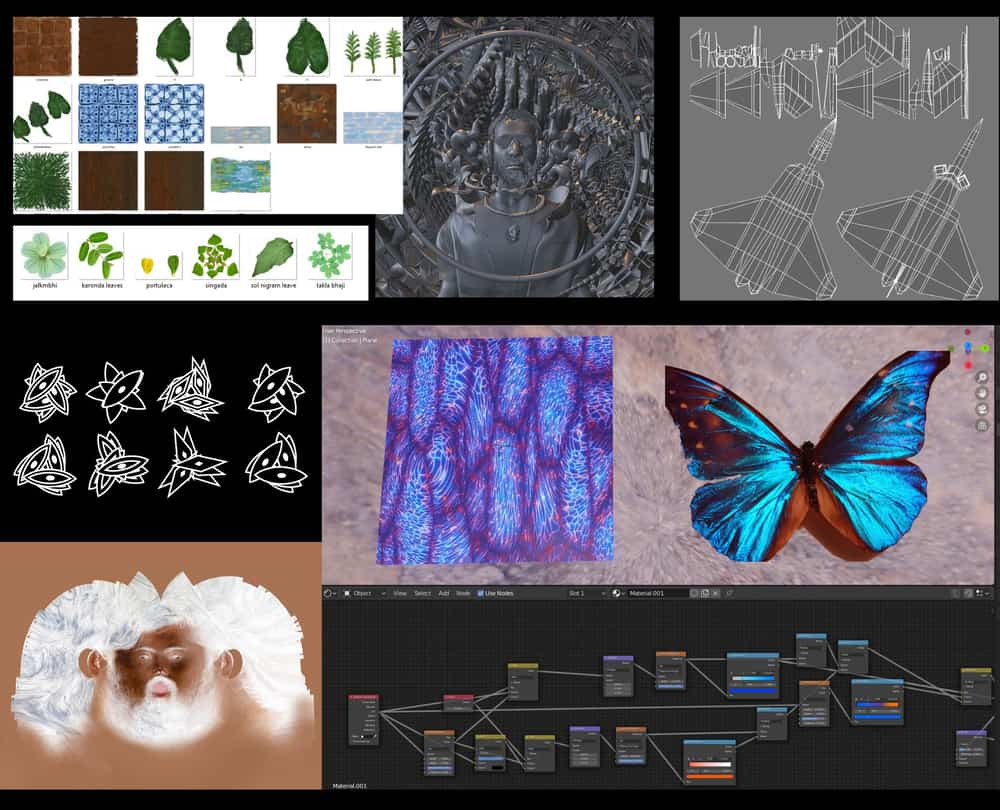

Textural mood board
Davangi: You mentioned that there are not many places that invite people from other disciplines especially science who can get familiar and indulge in fine/visual arts. How did you cope up with this hurdle? Please tell us some insights about your artistic endeavours in N.I.D.
Prerit: In essence, I was referring to the admission requirements of academic institutions. I found myself captivated by the artworks shared by artists on Facebook, many of whom hailed from backgrounds in art and film. A considerable number of these institutions welcomed individuals with bachelor's degrees in art, architecture, or engineering. The rigorous curriculum of dental schools, with its focus on practical and theoretical aspects, left little opportunity for exploration of personal interests. Consequently, I sought a respite from dentistry and began exploring alternative avenues. I distinctly recall that not all disciplines at N.I.D were accessible during that period. However, it appears that they have since revised their admission criteria to encompass a broader spectrum of backgrounds. I opted to apply for programs in graphic design and toy and game design, drawn to these fields based on my existing familiarity with them. Although my knowledge was limited, I anticipated the opportunity to craft various objects from diverse materials and refine my sketching skills for product design. NID offered a flexible framework, devoid of traditional examinations. Initially, it took some time to grasp the essence of design and its principles.
Davangi: Were there any changes/shifts in your artistic process post N.I.D ? To what extent these changes/shifts helped to further evolve in your practices?
Prerit: I strongly believe that setting aside moments of solitude away from the daily grind is essential. During these periods, individuals can delve into their interests at their own pace, fostering a deeper understanding of themselves and their connection to the world around them. Personally, I've always been driven by curiosity and a profound fascination with the intricacies of the world. I often found myself pondering profound philosophical questions, such as the process of societal meaning-making. NID provided a nurturing environment where I had the opportunity to engage with individuals from diverse cultural backgrounds and immerse myself in thought-provoking literature. Encountering books and people who shared my interests provided a sense of camaraderie and validation, instilling confidence in my aspirations. My time was predominantly devoted to these intellectual pursuits, as well as various design projects, leaving little room for personal artistic endeavors. Paradoxically, exposure to a wealth of creative stimuli sometimes left me feeling less motivated to produce art. However, I came to realize that moments of creative stagnation were invaluable opportunities for introspection and the cultivation of my artistic voice.
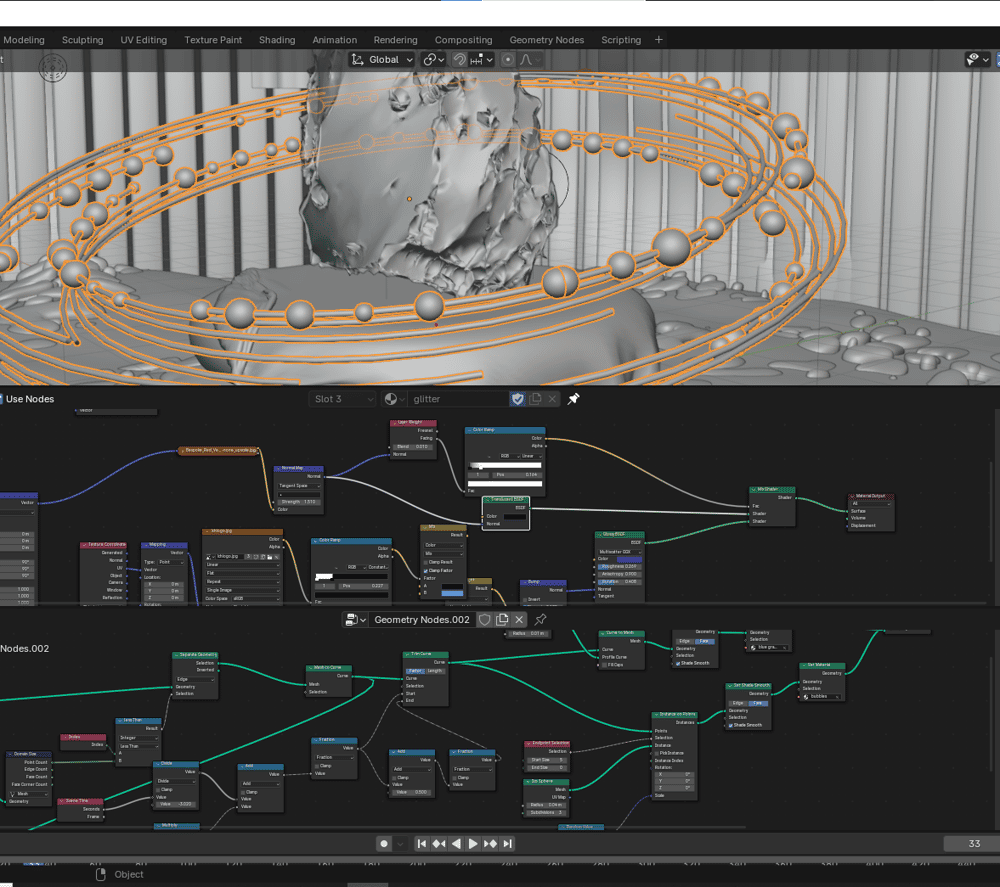

Blender workflow
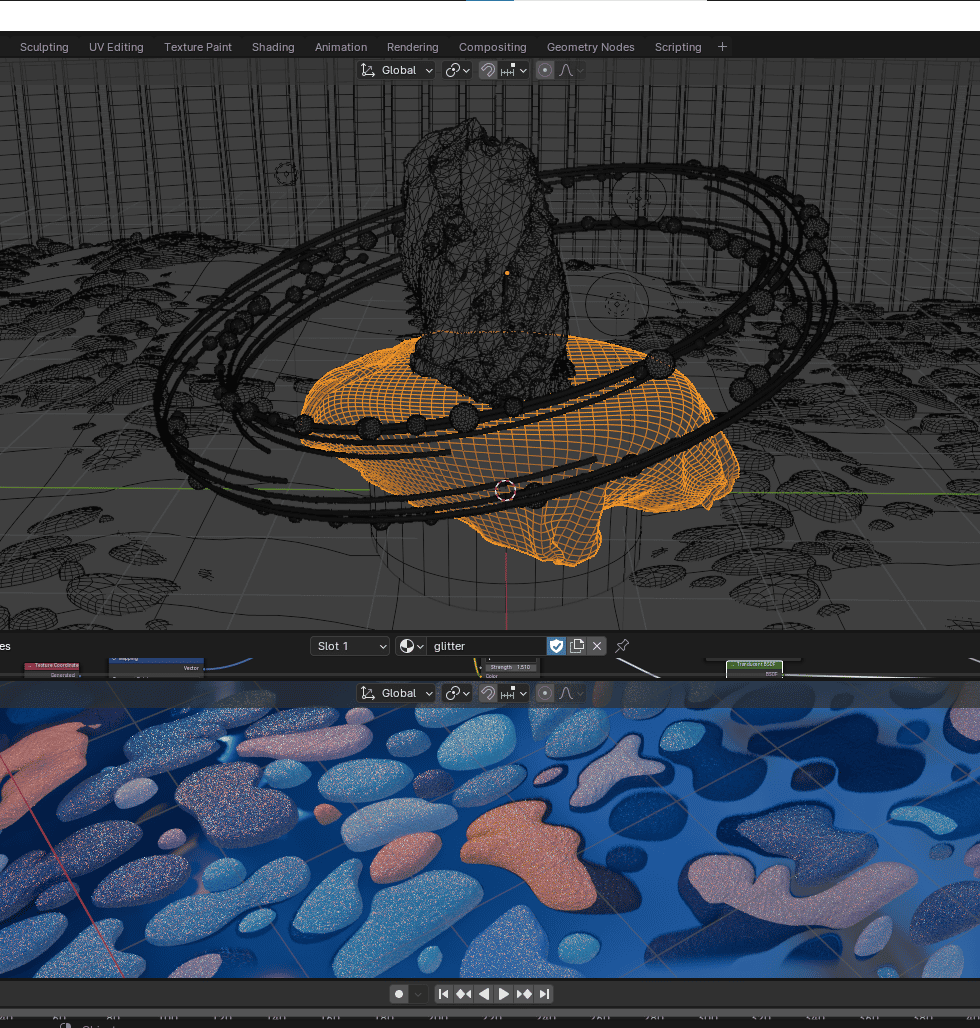

Behind the scenes
Davangi: In our earlier conversations you stated that use of technology in your practice is an extension of physical objects? Can you please describe further on this statement?
Prerit: I don't recall the precise context in which I made that statement, but I believe I was referring to our increasing reliance on digital platforms in our daily lives. Much like physical spaces, digital environments can become cluttered and chaotic, necessitating periodic organization and maintenance. With the advent of augmented reality (AR) and virtual reality (VR), the boundary between the physical and digital realms has become increasingly blurred. Objects such as jewelry, clothing, and exhibition spaces are seamlessly integrated into digital spaces. Moreover, within 3D software, physical objects and movements can be captured and imported to construct immersive digital worlds.
Davangi: How do you differentiate between art & design in your practice? Please tell us more about how you inculcate art & design in your practice?
Prerit: In practical terms, I find the discourse around art versus design to be somewhat futile, as these distinctions tend to blur during the creative process. The usage of these terms often shifts interchangeably depending on the context. While such discussions may hold merit within academic settings, particularly as an exercise, their practical utility is questionable. Coming from a background in hard science, I find it intriguing to observe the evolution of design from its roots in art. Unlike the realm of science, where empirical evidence reigns supreme, the realms of art and design also place value on tacit knowledge and subjective experiences. When crafting playful experiences, the boundaries between art and design become even more ambiguous. Play, by its very nature, is spontaneous and lacks a specific purpose. Therefore, when designing such experiences, it's crucial to create a structured environment that allows for play without compromising player agency.Nevertheless, the importance of the design process cannot be overstated, particularly when collaborating with various stakeholders. Design provides a structured framework, rendering the design process modular and minimizing communication discrepancies.
Davangi: You like experimenting with different media. Would you like to tell us about any future projects? What New media will you be experimenting with?
Prerit: Currently, my focus lies on stabilizing my finances and securing employment. Relying solely on art practice for sustenance has become increasingly challenging. However, I'm endeavoring to establish a structured routine that allocates time for various activities on a daily basis, including gardening, exercise, and artistic endeavours. Networking and self-promotion have never been my forte, but recognizing the necessity, I'm embracing the discomfort and venturing into creating 'content.' Admittedly, I'm uncertain about my proficiency in this realm. However, I'm leaning into my inherent quirkiness, seeking to channel it into my creative pursuits.
My inclination leans towards crafting playful interactive experiences as a response to contemporary themes and societal issues. Topics such as consumer culture, synthetic biology, algorithmic biases, information overload, and interpersonal conflicts inspire my work. I aspire to develop parody games, whimsical toys, and interactive narratives, believing that such lighthearted experiences have the potential to defuse tension and foster empathy. Moreover, they provide an intimate platform for audience engagement in the artistic process. In my exploration, I'm venturing into new mediums such as augmented reality, soundscapes, assemblages of found materials, digital art, and repurposed objects. Preferring visual storytelling over extensive text, I strive to ensure that my work remains accessible to diverse audiences across various platforms.
Click here to view Prerit's Online Viewing Room and learn more about his practice.

